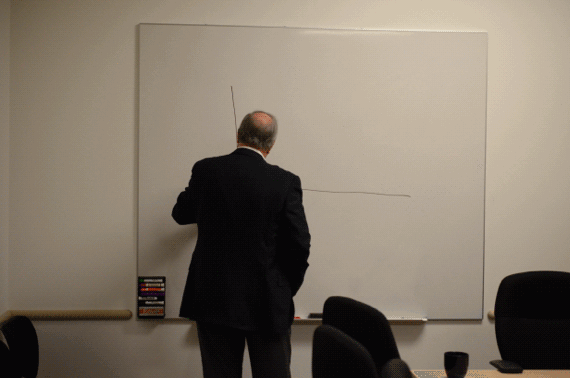Paul Otellini's Intel: History of the Computer Industry In One Chart
C Frank0 stashed this in History
Stashed in: Mobile!, gifs, History of Tech!, Charts!
The Mobile Mystery: What Did Otellini See and When Did He See It?
Many of the structural changes that occurred in these industries now seem predictable. It feels like somebody else could have positioned Intel differently to take advantage of these trends. At the very least, Otellini should have seen where the changes were leading the silicon world.
And the thing is, he did. He just wasn't able to get the Intel machine turning fast enough. "The explosion of low-end devices, we kinda saw as a company and for a variety of reasons weren't able to get our arms around it early enough," he admitted.
It was Otellini, after all, who had made the call to start developing the very successful low-power Atom processor for mobile computing applications. And it was Otellini, who upon ascending to the throne, drew a diagram that I'll call the Otellini Corollary to Moore's Law at the company's annual Strategic Long Range Planning Process meeting, or SLRP. He duplicated it for me in an appropriately anonymous Intel conference room, calling it half-jokingly "the history of the computer industry in one chart."
On the Y-axis, we have the number of units sold in a year. On the X-axis, we have the price of the device, beginning with the $10,000 IBM PC at the far left and extending to $100 on the far right. Then, he drew a diagonal line bisecting the axes. As Otellini sketched, he talked through the movements represented in the chart. "By the time the price got to $1000, sort of in the mid-90s, the industry got to 100 million units a year," he said, circling the $1k. "And as PCs continued to come down in price, they got to be an average price of 600 or 700 dollars and we got up to 300 million units." He traced the line up to his diagonal line and drew an arrow pointing to a dot on the line. "You are here," he said. "I don't mean just phones, but mainstream computing is a billlion units at $100. That's where we're headed."
"What I told our guys is that we rode all the way up through here, but what we needed to do was very different to get to [a billion units]... You have to be able to build chips for $10 and sell a lot of them."
Paul Otellini animated gif?! That's a first!
He does sit on the board of Google, so the fact that he missed the Android tidal wave is even more incredible.











3:14 PM May 16 2013